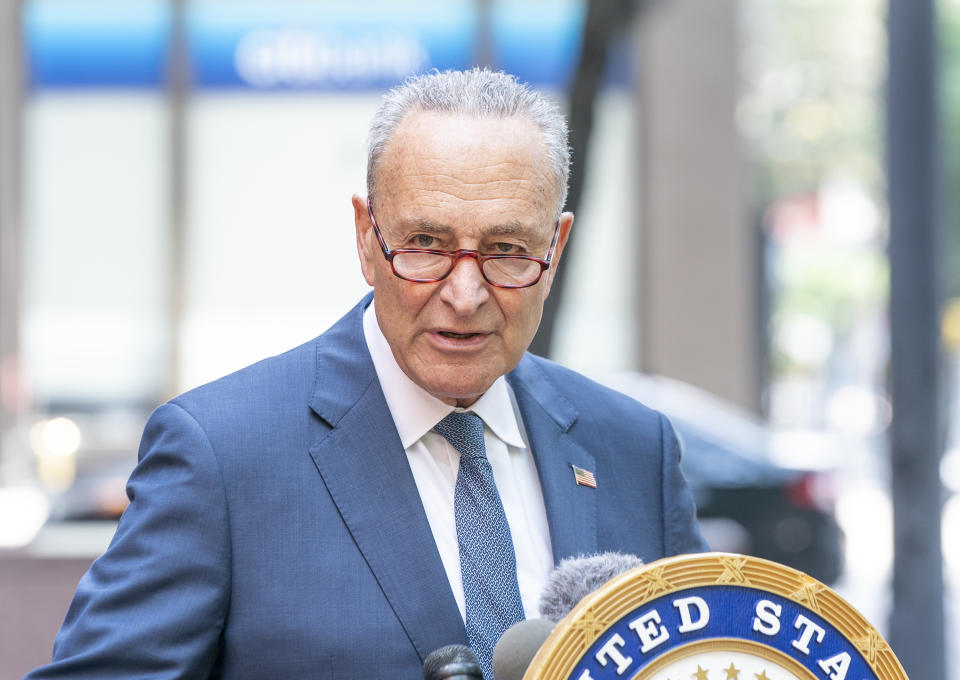Trump’s permanent payroll tax cut would deplete Social Security funds by 2023, analysis finds
If the payroll tax deferral becomes permanent next year — as President Donald Trump wants to do if reelected — the trust fund that pays out Social Security benefits could run out in three years without other funds to cover the shortfall, according to a new analysis.
The fund that provides disability benefits would deplete even sooner — by the second half of next year, according to the chief actuary of the Social Security Administration.
Currently, the Social Security funds are estimated to run out in 2034, while the disability fund is expected to remain solvent until 2065, according to the 2020 OASDI Trustees Report.

“If this hypothetical legislation were enacted, with no alternative source of revenue to replace the elimination of payroll taxes on earned income paid on January 1, 2021 and thereafter, we estimate that Disability Insurance Trust Fund asset reserves would become permanently depleted in about the middle of calendar year 2021, with no ability to pay DI benefits thereafter,” Chief Actuary Stephen Goss wrote in the letter.
“We estimate that Social Security’s Old Age and Survivors Insurance Trust Fund reserves would become permanently depleted by the middle of calendar year 2023, with no ability to pay OASI benefits thereafter,” Gross wrote, responding to a request from four Democratic senators asking for the analysis.
Read more: What happens when you drain your 401k retirement savings in your 20s
The analysis comes after the president issued an executive order earlier this month allowing some workers to temporarily defer their payroll taxes from the beginning of September until the end of the year, so they had larger paychecks during the coronavirus pandemic. Unless Congress passes legislation to forgive these deferrals, workers would owe those payroll taxes next year at tax time.

Trump signaled after signing the order that he would like to make the deferral permanent.
“If I am victorious on November 3rd, I plan to forgive these taxes and make permanent cuts to the payroll tax,” he said at the time. “I’m going to make them all permanent.”
White House economic adviser Larry Kudlow softened the stance some when interviewed on Fox News Tuesday.
Read more: Read more: Here's how to recession-proof your retirement plan
“I understood that to simply mean that we will permanently defer the payback of that tax cut. That's all that meant,” Kudlow said. “He wasn't talking about a generalized Social Security tax cut. He wants to protect Social Security.”
If payroll taxes are eliminated starting next year, the only way these funds could generate income is from interest on existing reserves and revenue from taxing monthly Social Security benefits, which is only a fraction of what’s needed.
“This highlights the reliance on payroll taxes for the Social Security Fund to operate,” said Daniel Milan, managing partner of Cornerstone Financial Services, “as interest earned is nowhere close to enough to support the benefits paid out.”

But Gross noted that funds from other sources could replace the funds lost from a payroll tax cut, similar to how the General Fund of the Treasury replaced the money lost to temporary payroll tax rate reductions that occurred in 2010, 2011, and 2012.
If a similar transfer of funds occurs to offset the payroll tax cut, “then OASI and DI Trust Fund income, benefits paid, and the projected depletion date of the trust fund reserves would be essentially unaffected by the legislation,” Gross wrote.
Dhara is a reporter Yahoo Money and Cashay. Follow her on Twitter at @Dsinghx.
Read more:
Coronavirus stimulus: No action yet on Trump's executive order on evictions
President Trump's promises to prevent evictions offers ‘false hope,’ experts say
Read the latest financial and business news from Yahoo Finance and Yahoo Money
Follow Yahoo Finance on Twitter, Facebook, Instagram, Flipboard, SmartNews, LinkedIn, YouTube, and reddit.

 money
money 